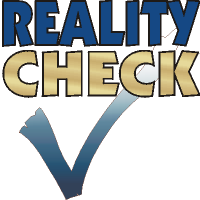The lobster fishery has been a way of life for generations of families along the South Shore. It’s literally put food on lots of tables.
As I don’t come from fishing folk, I wasn’t aware of how the perception of the value of lobster has changed. Lobster hasn’t always been considered a treat; far from it.
Generations ago, apparently it was embarrassing for a kid to bring lobster to school for lunch. A lobster sandwich conveyed the message, “We can’t afford to buy filling for our sandwiches; we have to eat lobster.”
Lowly lobsters were tossed in the garden for fertilizer. They were perceived as trash, with essentially no value.
How’s lobster perceived now? It’s featured as a delicacy in restaurants. It’s packaged for travel. It’s not thrown in the garden or perceived to be the food of the poor.
But it’s still lobster. It still looks, tastes, and smells the same as it did generations ago. The lobster hasn’t changed. What did?
The perception of value has changed. Why?
Part of that change may reflect the usual response to supply and demand.
As time went on, apparently lobsters were not so likely to wash ashore in great quantities, and so were less readily available. As well, inlanders began traveling to the shore as tourists, enjoyed lobster, and increased the demand. Reduced supply; increased demand: price goes up, and perceived value goes up.
But it seems like there was also a perceptual change similar to what happens in the fashion industries. Clothing, jewelry, shoes—they are all vulnerable to going “in” or “out” of style. A brand name hits the right promotional tone, becomes the hot thing; everyone wants it, the price goes up.
Then that brand is ousted by a different brand and your expensive sweatshirt, purse or coat becomes so “last year.” The product hasn’t changed. The material, the design, the workmanship is still there. But now it’s worth a fraction of its former value.
Let’s take those questions of value into a bigger picture.
Consider the things you value. (Let’s stick to physical objects for the moment.) What makes them valuable to you? Is their value based on how much you paid? Is it based on the object’s usefulness? Does the value come from memories it evokes?
Does something take on higher value if it’s been on TV or endorsed by a celebrity?
Does something have a higher value if someone else wishes they had it, too?
If you lived in the wilderness with no one to impress or to envy, would you still value the object?
Here’s my general question about the value of objects: Does your perception of the object’s value depend on how valuable others believe the object to be? Or do you decide the value based on your personal criteria: usefulness, effectiveness, or whatever is important to you?
Now, let’s consider the value of ideas and opinions.
When you hear an opinion, does your perception on whether it’s right or wrong depend on who is voicing it? Does it depend on how popular it seems to be? Does it depend on whether it’s being promoted on media or by thought leaders?
Or do you decide based on your own criteria: your principles, beliefs, and critical thinking skills?
Do you question why some opinions are promoted, while others are ridiculed? Do you wonder whether some prevalent opinions of the day are fundamentally sound, or are they, like the value of lobster, based on perceptions?
Whether it’s products or ideas, my thought is that when we let others define what’s valuable, we give up an important freedom.
So, how concerned would you be that people might judge you as poor if you bring lobster sandwiches in your lunch bucket?

